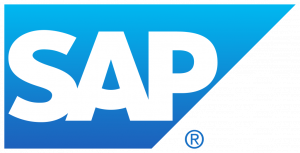The cost and speed at which government agencies can solve pressing issues through innovation have never been more critical.
In April 2019, the federal government took a fresh look at laying the groundwork to meet those types of demands, launching a new initiative and memorandum that moved shared service missions into central offices. Quality Service Management Offices, or QSMOs for short, are designated federal organizations that lead in areas such as finance and grants.
Although the concept of shared services isn’t new, what makes this effort unique is that it creates a marketplace for commercial providers to offer standardized Software-as-a-Service solutions to government. The vision is for agencies to embrace a common configuration baseline for software services, which will empower them to more easily and rapidly implement modern solutions.
“The eventual goal is to enable financial management professionals to spend more time on analysis and provide better service to their customers, and less time on traditional transaction processing and system maintenance,” said Guru Sarma, Federal Cloud Solutions Director at SAP.
Sarma shared best practices for agencies and their industry partners to consider as they co-innovate under this new model.
1. Ensure all agency stakeholders are informed
Although COVID-19 has shifted agency-vendor interactions from largely in-person to virtual, the substance of those conversations still must remain robust. For example, companies should still provide a sufficient understanding of their offering and roadmap.
“It’s important that information is not just exchanged in a standard procurement process but also via regularly scheduled interactive enablement sessions,” Sarma said. It will encourage the open exchange of ideas, clarify constraints and spark ways to arrive at a good middle ground to help reduce the cost of operating and running IT solutions.
“As we, and other vendors, make our solutions available as a SaaS offering, there cannot be gaps in continuing to meet federal requirements in the new model,” he added.
2. Embrace the configuration baseline
Working closely with the QSMOs and federal agencies, it is extremely important for software vendors to understand and align on the minimum baseline configuration. They can build to these standards, making the shared services marketplace an attractive option for companies to partner with agencies.
3. Make the marketplace attractive
“To keep the marketplace attractive for both agencies that would like to take advantage of a common baseline and agencies that want to maintain more control and need exception accommodation, cloud service providers like SAP should offer both private and public cloud offerings of their SaaS model,” Sarma said.
Depending on the offering, vendors should work closely with agencies to meet their specific security requirements, particularly if they exceed FedRAMP requirements.
“SAP is bringing modernization globally, and we’re bringing this to the doorsteps of our government customers,” he said. “We want to reduce the cost of running your business while enhancing opportunities to expand your horizons for business process modernization, process automation, smart analytics and intelligence.”
This article is an excerpt from GovLoop’s new guide, “Agency of the Future: Common Misconceptions Holding You Back and How to Break Free.” Download the full guide here.






Leave a Reply
You must be logged in to post a comment.